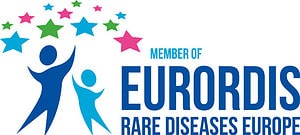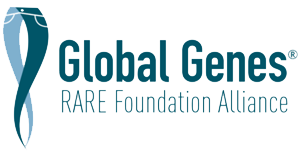
Tamar Fenton joins me to share the story of her daughter, Liel. MitochondrialRelated to the mitochondria. disease has ravaged her family and while her story may be tough to hear, it’s important because the work Tamar has done since Liel’s death is incredible and impactful.
EPISODE HIGHLIGHTS
Who was Liel?
Liel’s life was short, but she accomplished so much and touched so many people in 21 years. She was tiny, only 4’11.5″, but mighty. Her hair was beautiful, curly and an unreal color of strawberry blond. She was spunky, tenacious, super opinionated and strong-willed, funny and wise beyond her years. Before she got sick, she was always in motion. She did kickboxing, wrote a book to demystify mental health for children, she did slam poetry competitions, she learned ASL to become a big sister to a deaf child and she once even went undercover for a tobacco program to help prevent the underage sale of tobacco products. She had a large TikTok following and she connected with the younger population, helping them through difficult times and sharing support resources with them.
What was Liel’s diagnostic journey like?
At the age of 3, she was getting strep and ear infections that wouldn’t clear up and she was diagnosed with immune disorders. As time went on and she grew, she developed other symptoms like gastrointestinalGI issues, hair loss, gynecological issues, mental health issues and metabolic issues and she received several additional diagnoses. I couldn’t help but think that all of the symptoms were on the same trajectory of things happening in her body that suggested her cellular communication wasn’t working. Unfortunately, we didn’t initially have the support of specialists interested in digging deeper and they suggested that everything pointed to psychological issues. For 18 months, no one would consider any other diagnosis, Liel was treated horribly, and I was accused of having Munchausen by Proxy. The journey was heartbreaking and it broke us. It was only when we went to a private clinic and paid out of pocket, did we get the chance at cellular testing. Testing revealed Liel’s mitochondria had no energy. We then did genetic testing and Liel didn’t match any known mitochondrial disease. Because she didn’t appear to have a genetic disorder, we couldn’t be seen at the mitochondrial clinic and we were left with nowhere to turn. Liel went on hospice for the last 7 months of her life and we tried to make the most of time the best we could.
Since Liel has passed, what have you been working at?
It was important to Liel that no one else had to suffer the way she did. I promised her that I would tell the whole story. I started writing to all of her doctors and medical institutions to tell them what really happened that wasn’t in their records— what happened, how we were treated, tests they didn’t order and how Liel died. In some cases, I got a short note back to tell me they were sorry for my loss, they didn’t do anything wrong and they wouldn’t be meeting with me. I sought out a partnership to help me get Liel’s story out and make a change. I found The Patient Revolution, which is an organization that’s working to change the industrialized medical system to be kind, and careful and provide the time necessary to diagnose and treat patients with empathy. When I told them about Liel, they agreed to help me. I have also recorded videos for a course called Foundations of Care for The Patient Revolution which is offered to doctors and medical providers to learn how to advocate and change the medical system they work in. I’m also speaking at conferences to help spread awareness about the connection between antibiotics and mitochondrial damage.
LINKS & RESOURCES MENTIONED
The Times of Israel: Liel and Dora
PBS News: The Patient Revolution aims to expose healthcare flaws and pave the way for improvement
Tamar Speaking at MAPS 11-30-23
CONNECT WITH MITOACTION
Website
https://www.facebook.com/mitoaction
https://twitter.com/mitoaction
https://www.instagram.com/mitoaction/
https://www.linkedin.com/company/mitoaction










